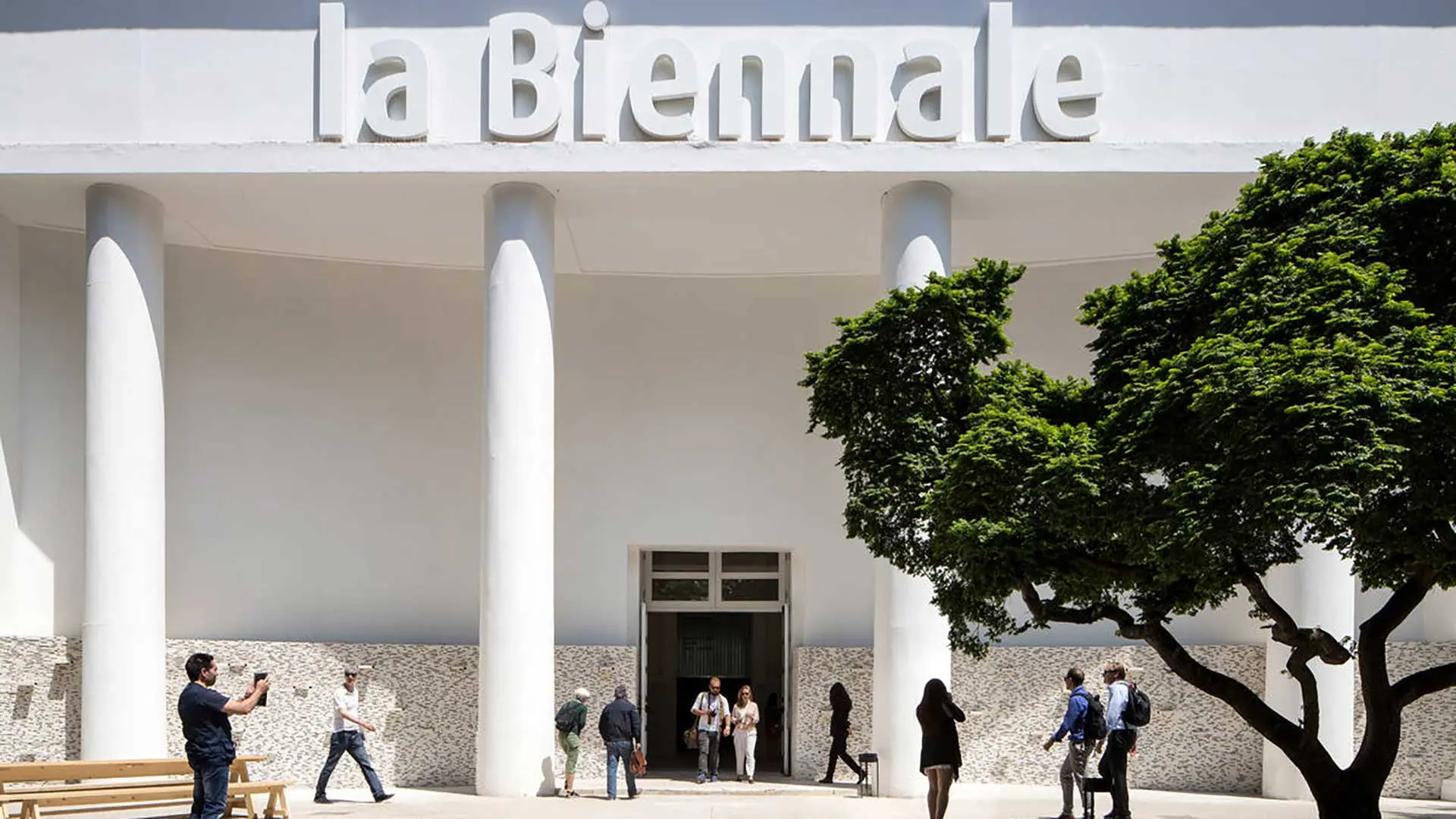The Turin-born architect and engineer discusses Intelligens. Natural. Artificial. Collective., the 19th International Architecture Exhibition devoted to the built environment and to the many disciplines that shape it
Salone 2025: the new furnishings and accessories combine sustainability with innovation

BD Barcelona 1972 - Ph. Alessandro Russotti
Totemic sculptures, industrial design that becomes collectible, but above all furnishings in comfortable and reassuring interiors, for the peace of the senses
The real stars of the Salone del Mobile.Milano 2025 are the products. This year, the year of Euroluce, is particularly lively with numerous cultural initiatives organized at the Fair and in the city, but never forget that the the furnishings exhibited by the more than 2,100 exhibitors from Italy and abroad are the true centerpiece of the fair. So our visit begins in the pavilions of the Salone Internazionale del Mobile and the International Exhibition of Furnishing Accessories, observing the proposals for 2025 and some general trends that we can sum up as the quest for extreme comfort, a functional minimalism that rediscovers metals as a design material and the search for leisure with scenic solutions that combine light and sound. Among the novelties there is undoubtedly the refinement of formal choices initiated in recent years, also evidenced by the decision to reuse the stands, as if to say, if a project works, why replace it?
The same goes for the accessories, where the increasingly architectural role of the sofa which we had observed previously is now heightened, with forms that expand, extend sinuously to reorganize the domestic space, and become even softer. If not always in the padding, which remains dense to the right degree, then at least in the materials of the upholstery. In this way the sofa becomes a precious ally for leisure, relaxation and idleness, and the great enemy of stress. On these sofas you can live, work and play. The armchairs have become enveloping again, with neutral palettes and natural materials, upholstered in bouclé, natural leather or deep velvet, with woven cushions and conceptual forms. And the chairs tend towards a waste-friendly logic in a responsible vision of production.
In general, we observe a search for calm, reassuring spaces, without shouting about sensational novelties but inviting people to enjoy chilling out and revitalizing themselves with the healing effect of extraordinary materials whose very touch conveys a sense of peace, in the fine workmanship and the invisible engineering that makes the movement of a stool just slow enough.
Relaxing in one of these spaces, you get the feeling that the furnishings are really starting to come alive, as the MIT researchers suggested at the Salone more than ten years ago with the TRANSFORM project. For now we are focused on the physical, formal aspects of things. Tomorrow our sofa may recognize our energy and respond with warmth, a slight movement and subtle vibrations, improving our mood.
Collectible ceramics
Industrial design increasingly offers “collectible” moments through one of the materials most loved by designers and artists: ceramics. An example are the editions of Bosa, this year exploring the theme of myth with vases, sculptures and tiles that bear the signatures of Alessandro Corina and Paolo Stella with the Motus/Mythos collection or the Bossanova totem collection by Pepa Reverter. Bitossi Ceramiche also collaborates with big names such as Patricia Urquiola, with whom it presents Merlate, a trio of tables that extend the collection of vases presented last year, made with the casting technique: white clay in its liquid state is poured into plaster molds, allowed to solidify and then finished by hand. Again, Rooms Studio presents the project The Shapes of Resistance created during the political unrest in Georgia. The beauty of raw clay is brought out by the collections of outsize vases from Atelier Vierkant, which at this Salone presents an exhibit design evoking a sense of monumentality and serenity of natural inspiration.
Also collectible and sculptural are the colored crystal vases by the French company Daum, with the Rêve Equestre series, in a limited edition of 225 pieces, inspired by the equestrian traditions of the Spanish riding school in Vienna and the royal stables of Versailles. A similar approach is also adopted by Villari, with lamps and collectibles such as the large Peacock at the entrance to the stand designed by Leone Villari himself.
Postmodern totems
After the above-mentioned totems by Pepa Reverter for Bosa, there are several companies that offer objects with totemic forms that mystify their function. Among them, Kartell displays four geometric sculptures in shades of gray, white, red and light green. This is the Prince OHOH stool designed by Philippe Starck for this edition of the Salone. Moooi also now reproduces a classic, the totemic optical Chess Table by Front. The collections from BD Barcelona 1972 also belong to this category, with the furnishings colored in Memphis style. In particular, note the Stedelijk Chair Colour by Sabine Marcelis, Eclipso by Jaime Hayon, Workplace B by Konstantin Grcic and the Simplex chair by Oscar Tusquets. Ichendorf Milano also works on the totem concept, but on a smaller scale, with accessories for the table. Examples include the Andalusia collection by Mario Trimarchi, the Travasi collection by Astrid Luglio and the Clarinette series of carafes by Naessi Studio. The Dalea and Centaurea lamps from the Portuguese company Vista Alegre are totemic and mysterious.
The totemic vein is clearly interpreted by Gufram, whose iconic products have been impressed on the collective imagination for decades. In 2025 it is launching reinterpretations of a classic with Drocco / Mello’s Boring Cactus in blue plush, and Keith Haring’s Blue Baby and Red Baby series.
Quiet interiors
Among the companies that invite you to relax on oversized, soft upholstery is Knoll, with a stand (the same as last year designed by OFFICE) with a strong 80s atmosphere and the Perron Pillo Sofa by the multi-disciplinary designer Willo Perron, and many reissues of iconic pieces such as the Tugendhat Chair by Ludwig Mies van der Rohe. Porro also focuses on the calm of the senses with products such as Tobu by Francesco Rota, Twin by Dordoni Studio and Origata by Nao Tamura. The queen of upholstered furnishings, this year Edra focuses on refining the products already in its catalogue, devising new upholstery for its classics. Minotti is notable for the 70s atmospheres that it manages to create with oversized sofas designed by Giampiero Tagliaferri and Marcio Kogan. Invariably with enveloping and decorative forms, here are the dreamy and colorful patterns of the carpets from the German company Jan Kath. Poliform presents Owen, a wraparound armchair with a black-stained elm wood base designed by Jean-Marie Massaud. Visionnaire presents Walker, a sofa that stands out for it s soft, enveloping shapes, offering an experience of absolute comfort.
Not only sofas but also comfortable chairs, such as the Glen by Gino Carollo for Calligaris, with a frame in ash wood, and an upholstered and padded seat and back. The new collaboration between Calligaris and Borbonese is also upholstered in the interpretation of the Quadrotta armchair by Archirivolto. Air quality likewise plays its part as in the Haori armchair from Adal. Designed by Canuch, it takes its name from the Japanese word for ‘kimono’ for the removable back covering, made of the same material as used in tatami mats. It is a natural material, hand-woven in Japan, capable of improving indoor air quality by its ability to absorb moisture. Another novelty for 2025 is the Monn coffee table, also by Caunch, with a base made from recycled acrylic 3D printed with carbon powder and a painted glass top. Calm interiors devoted to physical well-being also thanks to the new Reformer Pilates from Technogym, here working with this exercise regime for the first time. Living in comfort cannot transcend the fabrics we wear, from sheets and tablecloths to throws and towels. A new entry to this Salone is the Arca division of the Beste company, which controls the whole supply chain from the origin of the cotton, 100% made in Italy with plantations in Puglia. In addition to throws, blankets, pillows and terry toweling bathrobes, the company offers comfortable clothing such as sweatshirts and T-shirts for chilling out at home or traveling.
We wrap this up with the sinuous and inviting curves of Kasbah, the island sofa by David Lopez Quinconces for Living Divani.


































